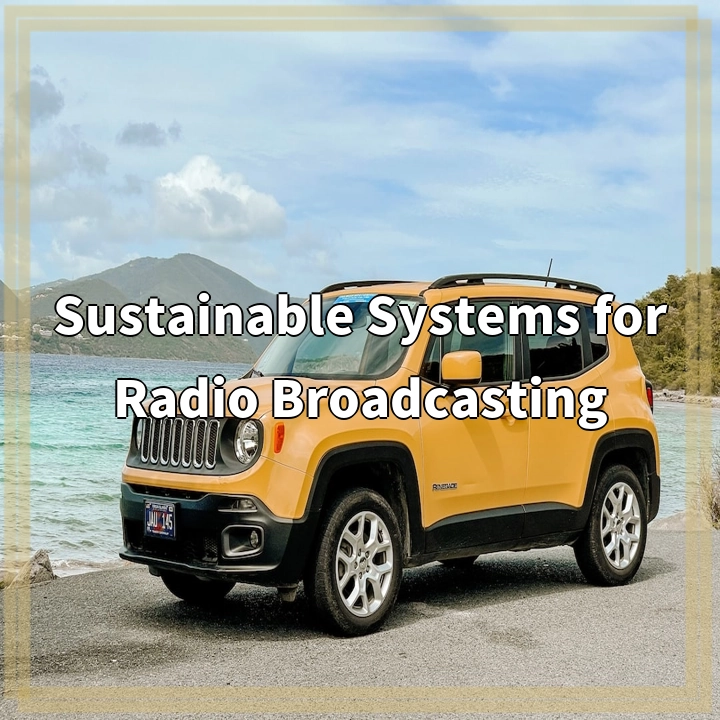
What is Sustainable Systems for Radio Broadcasting?
Sustainable systems for radio broadcasting aim to minimize the environmental impact of radio stations and promote sustainable practices throughout the industry. This includes taking steps to reduce energy consumption, manage waste effectively, and mitigate any negative impacts on the environment.
Real-World Problems Associated with Sustainable Systems for Radio Broadcasting
1. Energy Consumption
One of the main challenges in achieving sustainable radio broadcasting is the high energy consumption associated with operating radio stations. Broadcasting requires a significant amount of electricity to power transmitters, studio equipment, and other devices. This reliance on energy from non-renewable sources contributes to carbon emissions and contributes to climate change.
2. E-Waste and Equipment Disposal
The continuous upgrading of broadcasting equipment leads to the generation of electronic waste, also known as e-waste. Improper disposal of this equipment can have harmful effects on the environment, as many electronic devices contain toxic components. Finding sustainable solutions for e-waste management and promoting the recycling and reusing of equipment are important steps in reducing the environmental impact of radio broadcasting.
3. Sustainable Infrastructure
Creating and maintaining sustainable infrastructure for radio broadcasting poses challenges. This includes finding energy-efficient equipment and creating eco-friendly studio designs. Building sustainable infrastructure often requires financial investments, and broadcasters may face difficulties in finding the resources to implement these changes.
4. Accessible and Inclusive Sustainability
Ensuring that sustainable systems for radio broadcasting are accessible to all, regardless of location and socio-economic factors, is another crucial problem. Implementing sustainable practices in remote or underserved areas can be more challenging due to limited access to resources and infrastructure.

Solutions for Sustainable Systems in Radio Broadcasting
1. Energy Efficiency and Renewable Energy
Implementing energy-efficient practices and investing in renewable energy sources is crucial for reducing the carbon footprint of radio broadcasting. This can include using energy-efficient equipment, optimizing broadcasting schedules to minimize energy consumption, and transitioning to renewable energy sources such as solar or wind power.
2. E-Waste Management and Equipment Recycling
Implementing proper e-waste management strategies is essential to minimize the environmental impact of radio broadcasting. This can involve partnering with recycling services to responsibly dispose of old equipment and promoting equipment recycling and reusing within the industry. Adopting a circular economy approach can help reduce the production of new equipment and conserve resources.
3. Sustainable Infrastructure Design
Promoting sustainable infrastructure design in radio broadcasting facilities can significantly reduce energy consumption. This includes designing studios with energy-efficient lighting and ventilation systems, utilizing sustainable materials for construction, and incorporating green building practices. Implementing sustainable infrastructure may require collaboration with architects and designers to ensure eco-friendly and cost-effective solutions.
4. Knowledge Sharing and Collaboration
Encouraging knowledge sharing and collaboration within the radio broadcasting industry is vital for promoting sustainable practices. This can involve organizing workshops, conferences, and training sessions to educate broadcasters on sustainable technologies and best practices. Additionally, fostering partnerships with environmental organizations, industry associations, and government agencies can provide valuable resources and support for implementing sustainable initiatives.
5. Advocacy and Public Engagement
Engaging with the public and raising awareness about sustainable systems in radio broadcasting is crucial for driving change. This can be accomplished through public campaigns, educational programs, and community outreach initiatives. By promoting the benefits of sustainable broadcasting, listeners can actively contribute to the demand for environmentally responsible practices in the industry.















